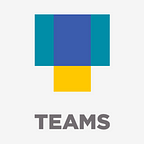Some People are Just Harder to Talk to than Others
User Research
As a global agency, we often come across projects that are easier to do through experience research in some countries than in others. Since the very reason companies are conducting global research is that they need to understand the why’s and how’s of what people do and think in other countries, it is always a bit surprising that companies don’t realize that cultural differences apply to how research is conducted in each country too.
Understanding the differences between audiences and the cost involved is as important as understanding and accommodating the researchers’ own cultural biases when identifying insights.
For example, in Europe, it’s much easier and less expensive to speak with specialized tradespeople and medical professionals than in the US. A few years ago, we quoted a research project for a European company in the US. They wanted to speak to surgeons in a specific specialty. When we submitted the quotation, they were shocked at the high cost. It was 9X higher than what they expected based upon the costs of European research.
In the US, in general, the more money someone makes in their profession, the more they expect for their free time. A surgeon often won’t agree to participate in research for less than $900 or more per hour.
Tradespeople and working professionals are also very difficult to recruit when the topic is their job. Not so much because they need a high incentive, but because they — and their employers — often view the research as possible corporate espionage.
So, the recruiters must work three to four times as hard to find each willing participant. That means that the cost driver becomes the recruitment cost. If the client has a relationship with the target audience, using those contacts is a great way to save money and time. However, we still often use a professional recruiter to set up appointments to save money for our clients. Too often client salespeople are not committed to setting up the appointments since their job metrics measure them on sales.
Research for them is often viewed as potentially damaging to their sales relationships so they may be reluctant to contact their customers, even for their own company.
The language barrier and cultural gap
Next, once the research is recruited, it’s ideal to have native speakers or cultural natives conduct or participate in research in each country. If that isn’t possible, if the client has native employees, getting them engaged can help bridge the cultural gap.
If not, then it’s important to make sure that any materials that have been translated both at the front end (i.e. discussion guides, concepts, and surveys) and the back end (reporting) are culturally relevant and properly translated. As a global company, we see that many English words are regularly used in Europe and Asia that don’t mean the same thing to an English speaker in North America.
Finally, it’s important to have all the researchers working in concert with each other to showcase any native bias. A native researcher may not have the background to understand that some of the findings are insight for your company because those findings are so prevalent in their country. Having the researchers interact, present to each other early on, prior to creating final reports, can be eye-opening to all involved, especially if the client is not attending all the research. This collaborative approach ensures that all insights are culturally relevant to the client.
In the end, when planning global research, it’s important for an understanding of bias, whether it be on cost or culture. Planning for variances is part of the experience.
